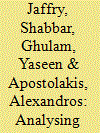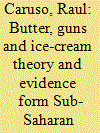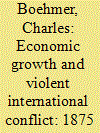| Srl | Item |
| 1 |
ID:
096266


|
|
|
|
|
| Publication |
2010.
|
| Summary/Abstract |
Manning difficulties and retention of skilled personnel is a timely issue in the British armed forces, and especially in the all-volunteer Royal Navy. Allied with difficulties of matching personnel numbers and posts, significant skill mismatches can take a long time to eradicate, with obvious financial and operational penalties. In the light of these factors, a holistic understanding of the exit behaviour of naval personnel is vital for naval manpower planners. This paper analyses ratings' voluntary (quits) and involuntary (separation) exit patterns from the Royal Navy using an independent competing risks hazard regression analysis framework. The results show that both voluntary and involuntary exits are pro cyclical with respect to macroeconomic and labour market conditions for both male and female ratings. Male ratings are more likely to quit or separate due to a lack of promotion to higher ranks as compared with females. Male ratings are also more likely to quit as a result of a hectic operational tempo when compared with their female counterparts. Frequency of sea/shore deployments also seems to exert a significant effect with respect to quits and separation outcomes of both genders. In terms of marital status married males are less likely to quit compared with their unmarried male counterparts, whereas the opposite is the case for female ratings.
|
|
|
|
|
|
|
|
|
|
|
|
|
|
|
|
| 2 |
ID:
096269


|
|
|
|
|
| Publication |
2010.
|
| Summary/Abstract |
This paper is intended to complement the existing literature on civil wars. First, it presents a simple theoretical model of conflict that defines a two-sector economy. In a contested sector, two agents struggle to appropriate the maximum possible fraction of a contestable output. In an uncontested sector, they hold secure property rights over the production of some goods. Agents split their resource endowment between 'butter', 'guns' and 'ice-cream'. Following the theoretical insights the empirical analysis focuses on the relationship between civil wars and different sectors of the economy. In particular, a panel probit specification shows that the incidence of a civil war decreases in the size of manufacturing sector.
|
|
|
|
|
|
|
|
|
|
|
|
|
|
|
|
| 3 |
ID:
096268


|
|
|
|
|
| Publication |
2010.
|
| Summary/Abstract |
Are states with growing economies more likely to become involved in violent interstate conflicts? This project examines whether economic growth increases international conflict using a global sample of states from 1875-1999. The theory argues that multi-year economic growth increases the resolve of state leaders to reciprocate and escalate militarized interstate conflicts, thus increasing the occurrence of fatalities or war. The results show that economic growth, but not growth of military expenditures, raises the risk of violent interstate conflicts. The results do not support the proposition that economic slowdowns result in violent interstate conflicts.
|
|
|
|
|
|
|
|
|
|
|
|
|
|
|
|
| 4 |
ID:
096267


|
|
|
|
|
| Publication |
2010.
|
| Summary/Abstract |
The Junior Reserve Officers' Training Corps is a high school program that combines classroom teaching with extracurricular activities. The program is located primarily in inner city schools and serves at-risk students. Its goals are multidimensional and include military preparation and improving academic achievement. Using High School and Beyond data we find that the program's effects depend on the timing and intensity of involvement. Test scores, graduation rates, and enlistments are higher for students who participate early in high school and for those who persist in the program. Conversely, we find few effects for students participating in the last two years of high school.
|
|
|
|
|
|
|
|
|
|
|
|
|
|
|
|